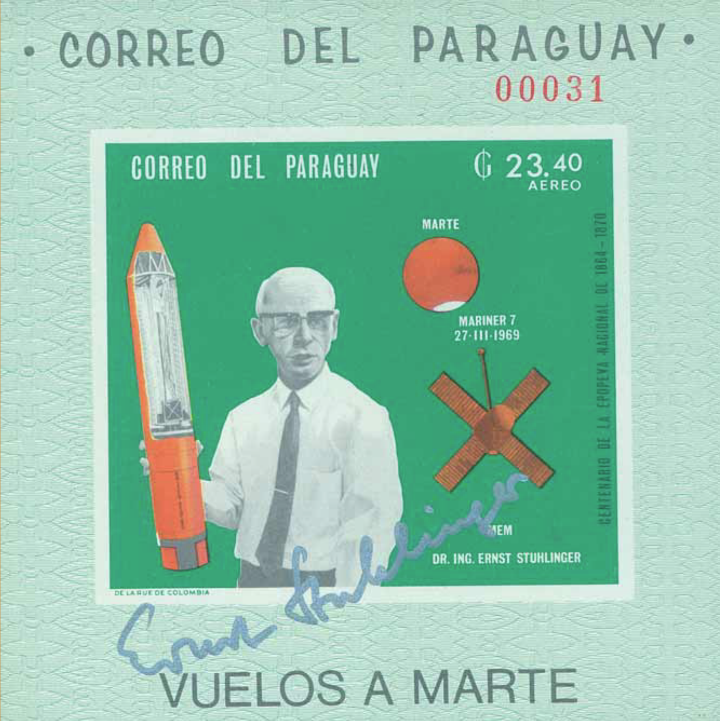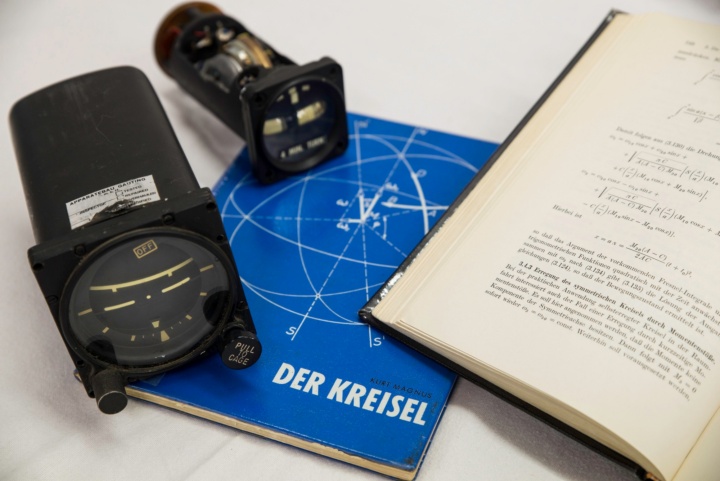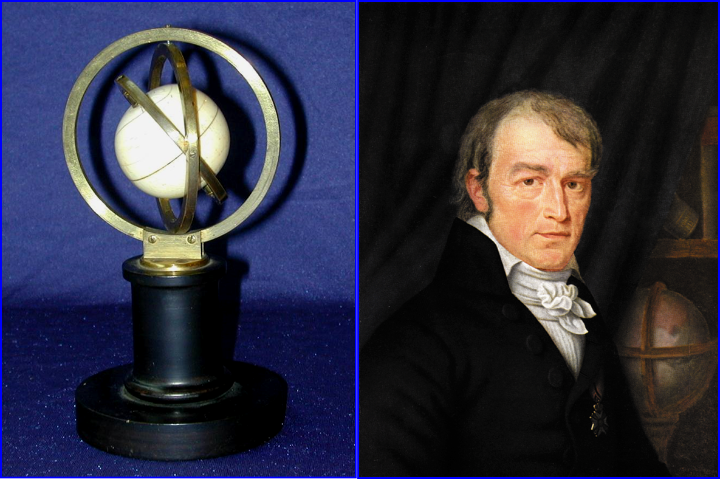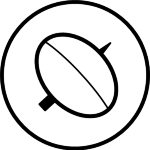
Stamp with portrait and signature of E. Stuhlinger
No period in human history was more influenced by science and engineering than the 20th century. In search of the scientific sub-disciplines that are particularly characteristic of the named development, one inevitably encounters two areas: aerospace engineering and atomic physics. There are only a few people who were able to experience advances in the first line in both areas, and in some cases were able to participate in shaping them spectacularly. Ernst Stuhlinger is one of them.
He was born in 1913 in Niederrimbach, attended school and university in Tübingen, and spent his doctorate under H. Geiger, one of the inventors of the Geiger-Müller counter tube, with whom he went to the Technical University of Berlin in 1936. He joined the "Uranverein" and got to know the then leading German nuclear physicists. It followed the participation in the Russian campaign from 1941 and finally the transfer to Peenemünde to Wernher von Braun in 1943. From this point on, his scientific work is closely linked to the pioneering era of space technology.
With the team headed by Wernher von Braun, he moved to the USA after the Second World War and took over the management of the Research Projects Division in Huntsville, AL. From 1968, he was Associate Director for Science. He was involved in the development of the first American satellite Explorer 1, as well as the Apollo lunar landing program, the Hubble telescope and electric space propulsion systems. From 1976 he was Professor of Astrophysics at the University of Alabama, Huntsville.
When he died in Huntsville in 2008, friends and former NASA colleagues characterized him with the words: "If von Braun was the Columbus of the 20th century, then Ernst Stuhlinger was his navigator and confidant."
References:
- Wagner, J.F: Öffnet das Tor zum Himmel – Ernst Stuhlinger, ein Schwabe als Pionier der modernen Raumfahrt. In: Wiegmann, K.; Niepelt, M. (Hrsg.): Hin und Weg – Tübinger in aller Welt. Tübingen: Stadtmuseum, 2007, S. 138-149
Abstract
- Stuhlinger, E., Ordway, F.: Wernher von Braun, crusader for space, an illustrated memoir. Malabar, FL: Krieger, 1994
- Stuhlinger, Ernst et. al: Projekt Viking, die Eroberung des Mars. Köln: Kiepenheuer und Witsch, 1976
- Stuhlinger, E. Mesmer, G. (Hrsg.): Space science and engineering. New York: McGraw-Hill, 1965
- Stuhlinger, E: Ion propulsion for space flight. New York: McGraw-Hill, 1964





